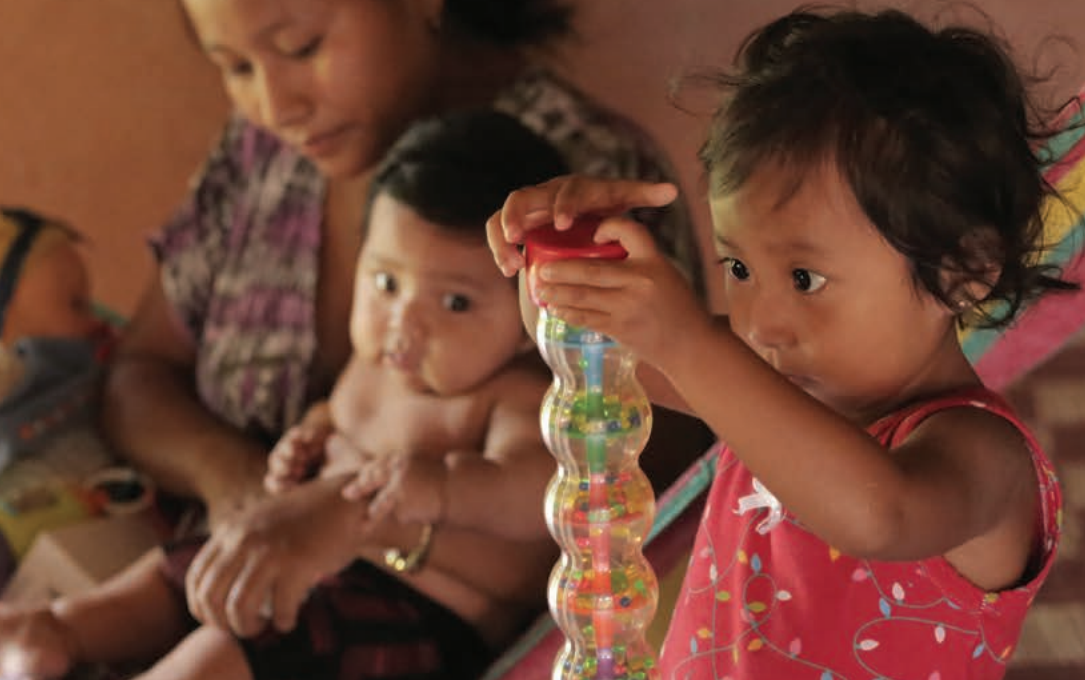The recently launched UNICEF-World Health Organization (WHO) 2017 Countdown to 2030 report shows mixed results for childhood health and nutrition. The 81 Countdown countries have made progress, but remain far from universal coverage for most essential interventions for reproductive, maternal, newborn, child health, and nutrition. The report presents detailed country and equity profiles on women’s, children’s and adolescents’ health for countries that together account for 95 percent of maternal deaths and 90 percent of deaths among children under five.
To galvanize attention and mobilize action around priorities in maternal and child nutrition, various global targets have been set, including the United Nations’ 2030 Agenda for Sustainable Development and the WHO’s Every Woman Every Child Global Strategy for Women’s, Children’s and Adolescent’s Health (2016–2030). The Countdown to 2030 report systematically tracks progress towards achieving these. IFPRI is a member of the Countdown to 2030 collaboration.
In the accompanying Countdown to 2030 paper published in The Lancet on tracking progress towards universal coverage for reproductive, maternal, newborn, and child health, Countdown collaborators have underscored the need to accelerate the rate of decline in prevalence of maternal and child mortality, stillbirths, and stunting among children under five, to achieve the Sustainable Development Goals by 2030. Such efforts will require a rapid scale-up of effective interventions to all population groups within affected countries, supported by improvements in underlying socioeconomic conditions, including women’s empowerment.
India is one of the priority Countdown countries, and as the findings of this report reflect, is still a long way from achieving universal coverage for most essential interventions in these key health and nutrition areas. The Countdown work has been an inspiration for POSHAN’s research and data visualization work on coverage of interventions across the continuum of care in Indian states. POSHAN’s state-level Policy Notes, based on updated coverage data now available in NFHS-4 (2016), reveal that the coverage of interventions for mothers and children in the first 1,000 days has improved substantially over time, but challenges remain. There are significant state-level variabilities in the coverage for some interventions. Coverage during pregnancy is generally high, up to 75 percent for some interventions, like pregnancy registration. However, coverage of nutrition interventions integrated into pregnancy care is low at less than 33 percent for women who consumed iron and folic acid supplements. During delivery, coverage is high: Nearly 80 percent for interventions pertaining to institutional delivery, skilled birth attendance, and birth registration. However, coverage of interventions for lactating women remains much lower than 50 percent.
An effective way to track a country’s progress towards any global goals is to apply them at the national level. In India, there is much optimism pegged on the recently launched National Nutrition Mission, which aims to reduce stunting, undernutrition, and low birth weight by 2 percent and anemia by 3 percent annually, covering states and districts in a phased manner over three years (2017-20), benefiting more than 100 million people. Meeting these goals will require that India deploy the interventions already in the policy framework at high coverage, reaching across states and districts. Analyzing coverage levels and trends is an important first step in prioritizing interventions where gaps are large and where efforts need to be scrutinized and accelerated.
As the 2017 Countdown to 2030 report points out, to address the targets at the global and national levels, it is important to focus on the strengthening of vital statistics, understanding drivers of coverage change, and obtaining better data on early childhood development and adolescent health. In India, the government think tank NITI Aayog now has a Nutrition Dashboard that provides nutrition charts of India’s states and districts and examines coverage of some (but not all) critical interventions. POSHAN’s district-level interactive maps and 640 District Nutrition Profiles also provide disaggregated data and detailed in-depth analyses.
In addition to outcomes and coverage, it is also important to focus on the indirect and underlying determinants, like sanitation and hygiene, access to drinking water, women’s literacy, girls’ age at marriage, etc. Countdown’s national profiles and POSHAN’s state and district profiles provide ready reckoners for an assessment of these underlying drivers and help to identify the gaps that need to be closed to accelerate change in health and nutrition outcomes.
Changes in health outcomes will only become a reality with changes in coverage of interventions and in the drivers of these outcomes. Promising beginnings have been made on the nutrition and health landscape and there is much anticipation on the horizon. However, efforts to address coverage and drivers now need to be strategically navigated to catalyse progress towards 2030, both globally and in India.
Purnima Menon and Stuart Gillespie are Senior Research Fellows with IFPRI’s Poverty, Health and Nutrition Division and members of the Countdown to 2030 Collaboration: Menon participated in the Coverage Technical Working Group; Gillespie in the overall Technical Review Group. Pratima Mathews is an IFPRI Communications Specialist. This post originally appeared on the POSHAN blog.







